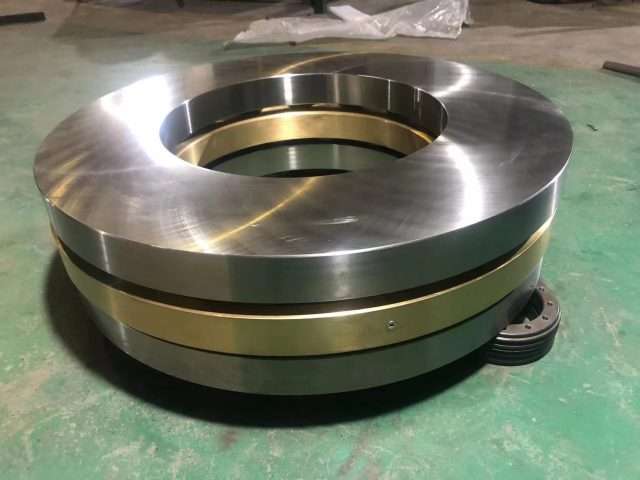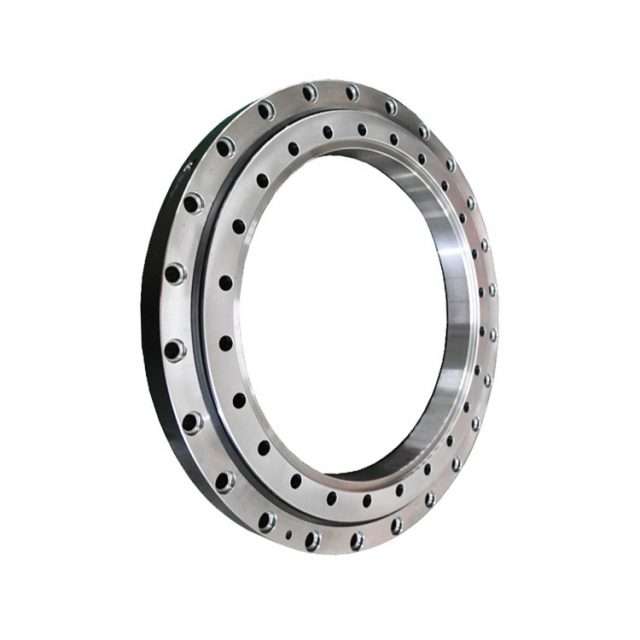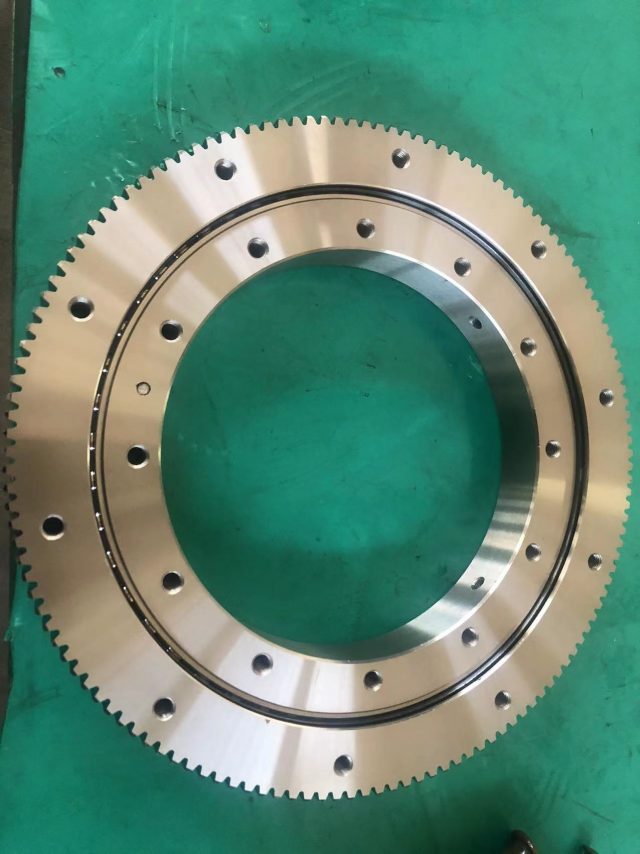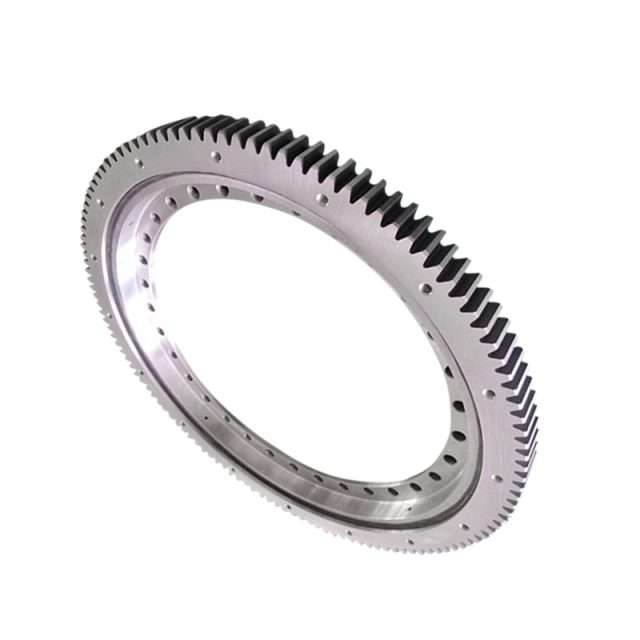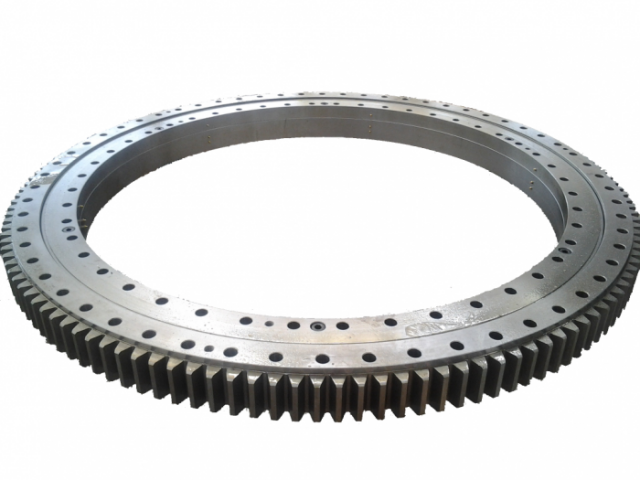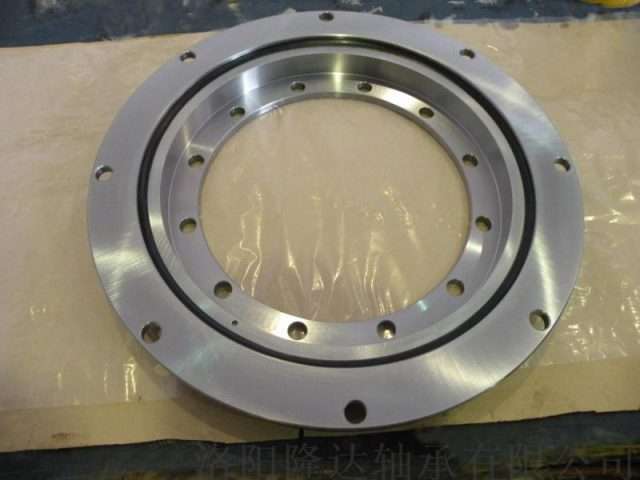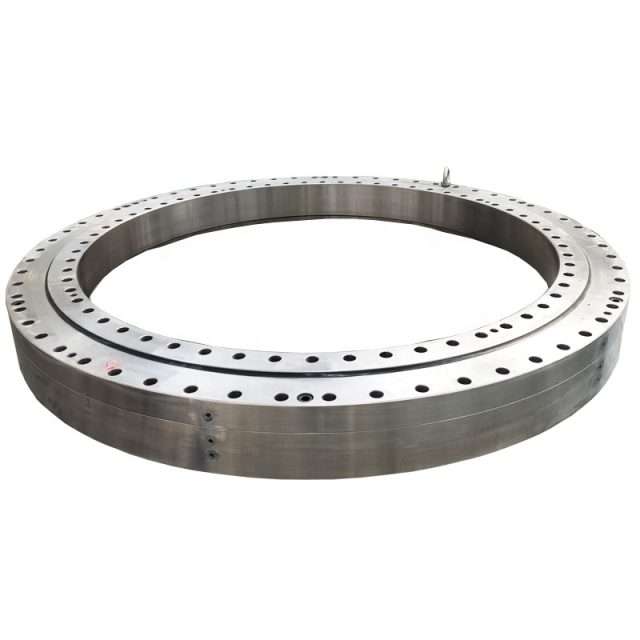high quality china slewing bearing suppliers 2022
What are the main failure modes of slewing bearings?
Due to its own quality and external conditions, the performance of the bearing will change due to its own quality and external conditions. When the performance index of a bearing is lower than the use requirements and affects the normal operation, This is called bearing damage or failure.
The main failure modes of slewing bearings:
1. Metal corrosion occurs
If the bearing lacks lubrication during use, it will be oxidized and rusted by the air. And don’t soak in water. The material of the slewing bearing is stainless steel.
When taking the bearing, wash off the sweat on the hand, apply mineral oil before taking the operation, especially in summer and rainy season, pay special attention to rust prevention.
2. Excessive load or improper use
Bearings cannot exceed their own load during use. Just like if the car pulls too heavy goods, it is easy to cause damage to the slewing bearing. Therefore, in general, the bearings of trucks are more easily damaged than cars, and the reason is that many of the parts are overwhelmed.
3. The slewing bearing clearance is too small
For example, the front wheels of the car use inclined-push slewing bearings, and the clearance of the bearings needs to be adjusted. If the clearance is too large, it will cause abnormal noise, deflection, or wheel shaking. If the clearance is too small, it will accelerate the wear of the bearing.
For old slewing bearings, it is necessary to check whether there are burrs, scratches or cracks on the surface of the ball (column), and whether the radial clearance and axial clearance are qualified; for new bearings, it is necessary to check the bearing type first. is it right or not.
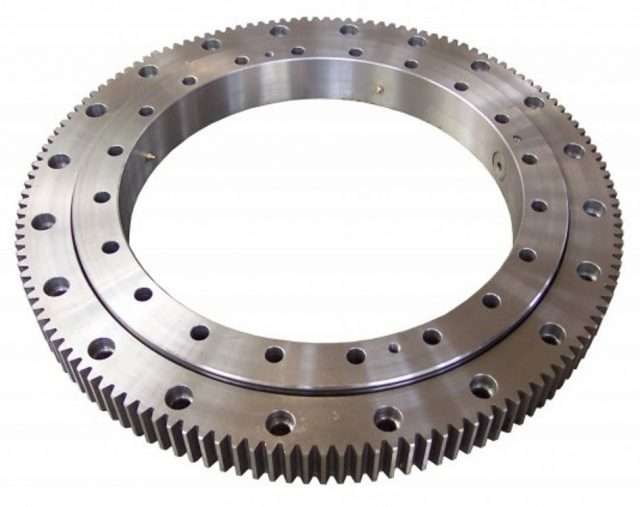
4. Use inferior slewing bearings
Some bearings are produced by some small factories whose production technology cannot meet the requirements. The accuracy of the shaft or bearing box is not accurate, and the steel of the bearing is directly pressed for production without proper treatment. Therefore, the service life of the produced bearing is not long.
5. Improper installation operation
When the bearing is installed, it is necessary to follow the installation steps of the bearing, and it cannot be installed and disassembled with brute force. Whether the bearing is installed correctly is closely related to the service life of the bearing.
When the bearing is installed, it is not allowed to punch or hit the bearing directly with a hammer. Try not to take it directly by hand. The sweat on the hand will also cause the bearing to rust.
6. Foreign body intrusion
When installing or using the bearing, you need to use special tools, try to avoid things such as cloth or short fibers, so as to prevent fibers from entering the bearing and causing damage.
If the installation personnel use the copper rod knock-in method when installing the bearing, the axial force of the bearing may be uneven, which will cause problems such as deformation of the cage, damage to the rolling elements, and enlargement of the clearance.
During the knocking process, copper powder may fly into the bearing cage, making the bearing prone to failure.
2.How to correctly judge and deal with the peeling of the slewing bearing raceway and the broken teeth of the ring gear
Due to the manufacturing quality problems such as material pores or uneven hardness and depth of the hardened layer of the interlayer raceway, or some external reasons,
the hardened layer of the raceway is peeled off or the teeth of the gear ring are broken during the use of the slewing bearing, so that the equipment cannot work normally.
For raceway peeling, first make a correct judgment. There is peeling, which is generally not easy to see on the outside. According to our experience, the following conditions indicate that the raceway has peeling layers:
when the main engine rotates under load, there is an abnormal “clack-clack” sound at the raceway, the rotation speed is uneven or the speed in a certain direction is obviously slowed down and accompanied by There is slight vibration;
the temperature rise of the rotary motor is too high or the current is too large; the keyway of the rotary motor and the hydraulic coupling or coupling is crushed, etc.
After peeling occurs, it must be repaired in time. Otherwise, the peeling area will expand, so that the entire slewing bearing will be scrapped.
The repair method is: first take out the rollers or steel balls in the slewing bearing to separate the inner and outer rings; then clean the raceways with gasoline;
then use a grinder (grinding wheel) to carefully remove the needle peeling area of Microsoft Corporation. Grind off the hardened layer of the cracks that have occurred around, and smooth the bottom of the peeling layer;
preheat the place where the raceway needs to be repaired with a welding torch, and use a medium carbon steel electrode for welding (the electrode must be dried before use, and followed by The welding layer should be slightly higher than the surface of the raceway by 1-2mm;
if the peeling layer is deep or the area is large, the welding should be applied in layers and sections, and the base metal temperature should not be too high to cause deformation;
this avoids Rapid cooling produces welding cracks, and thermal insulation measures should be taken immediately after welding to gradually cool him. After cooling, use a grinder to smooth the repair welding layer so that it is slightly higher than the surface of the raceway.
Gradually grind the repair welding layer with whetstone or metallographic emery cloth to make it the same height as the normal surface of the raceway.
Use the corresponding original curvature. Test the samples until they are qualified; clean the raceways and rollers (steel balls) with gasoline, apply grease, and complete the assembly.
The reason for the broken teeth of the rotating ring gear may be the quality problem of the cast section of the tooth base material (such as blisters, interlayers and other defects, which will obviously weaken the bending resistance of the gear);
stones or steel bars are embedded in the meshing of the gear teeth during use. The hard object increases the local bending stress of the gear teeth and breaks.
The repair method is local repair welding or tooth insert repair. The method of local repair welding is: first grind off the residual crack matrix of the damaged part with a portable grinding wheel, clean it with gasoline (oil);
use a welding torch to preheat this part, After reaching the fixed temperature, use a medium carbon steel electrode to push and weld the prototype of the tooth on the damaged part of the tooth, so that it is 1-2mm higher than the tooth surface of the party; until the tooth shape meets the requirements.
When a whole tooth of the rotary gear ring is damaged, it can be cut along the root of the tooth, and then the tooth root is filed into a fixed shape, and then the next tooth is stored on the same type of waste ring gear,
processed into the corresponding shape of the base metal, and then placed into the groove, and use the toothed template to clamp the positioning.
In order to ensure the consistency of the tooth pitch, and after the double-wire chuck is used to increase the value, it is welded with low carbon steel around the tooth. Use a file and other tools to smooth the weld to ensure that the meshing of the gear teeth is stabilized.


